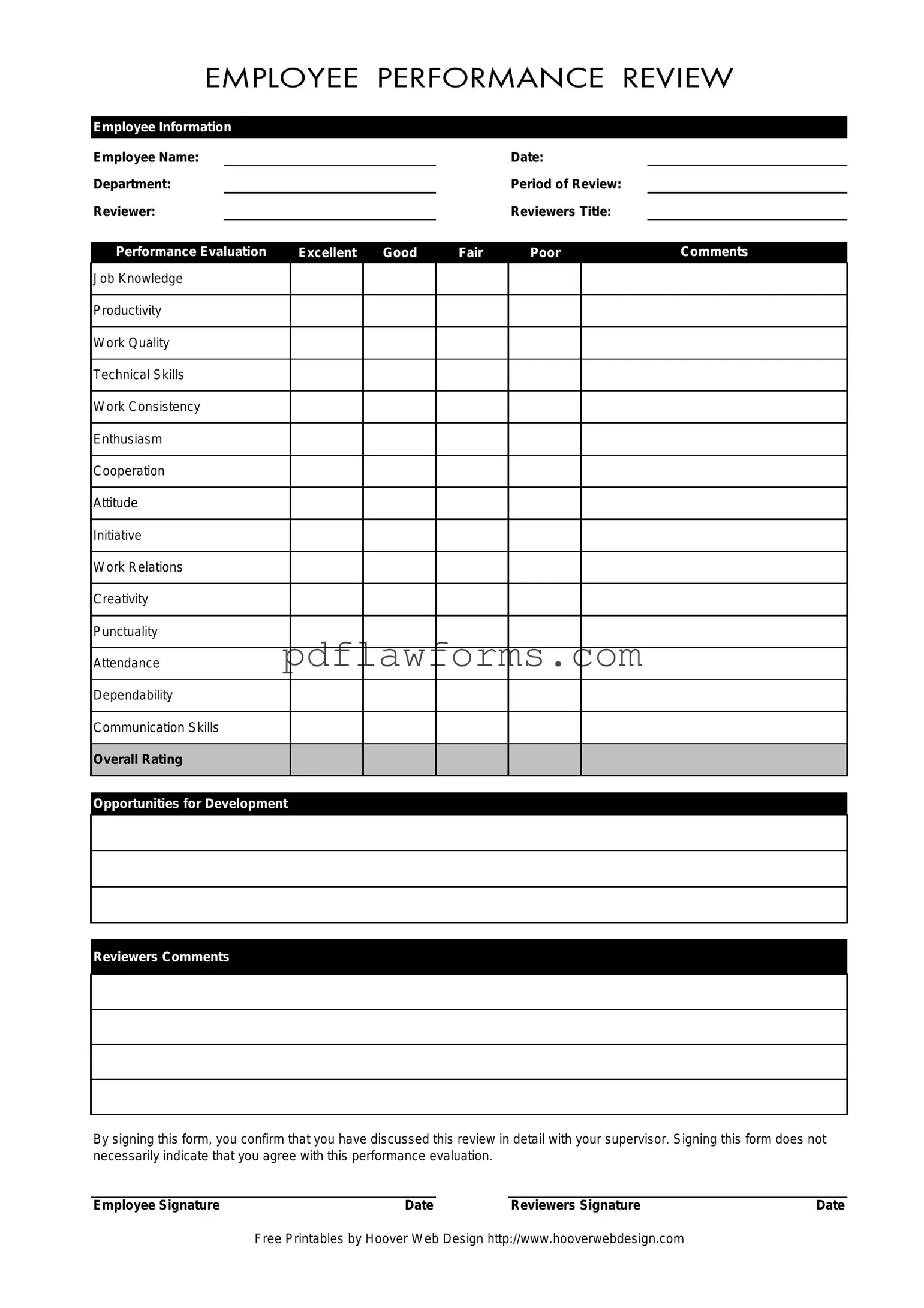The Employee form serves as a critical tool in the performance evaluation process, facilitating constructive dialogue between employees and supervisors. It encompasses essential information such as the employee's name, department, and the period under review, ensuring that all relevant details are captured for accurate assessment. The form includes a section for the reviewer’s name and title, establishing accountability in the evaluation process. Performance metrics are categorized into various areas, including job knowledge, productivity, work quality, and communication skills, allowing for a comprehensive evaluation of an employee's contributions. Each category is rated on a scale of excellent to poor, supplemented by comments that provide context and clarity. Additionally, the form emphasizes opportunities for development, encouraging a forward-looking approach to performance improvement. The signatures of both the employee and the reviewer at the end of the form signify that a thorough discussion has taken place, although it is important to note that signing does not imply agreement with the evaluation. This structure promotes transparency and fosters a culture of continuous improvement within the workplace.
